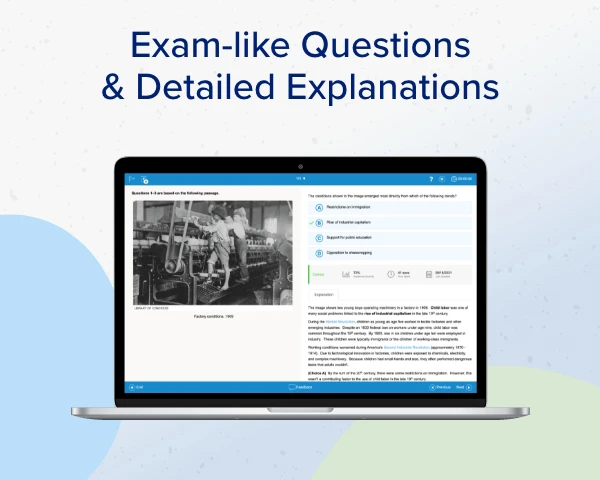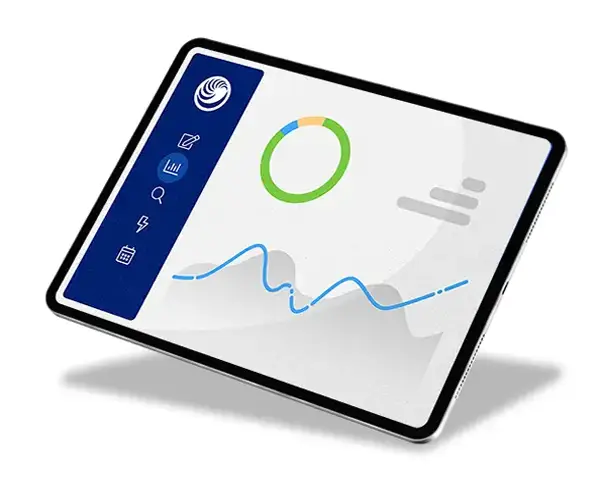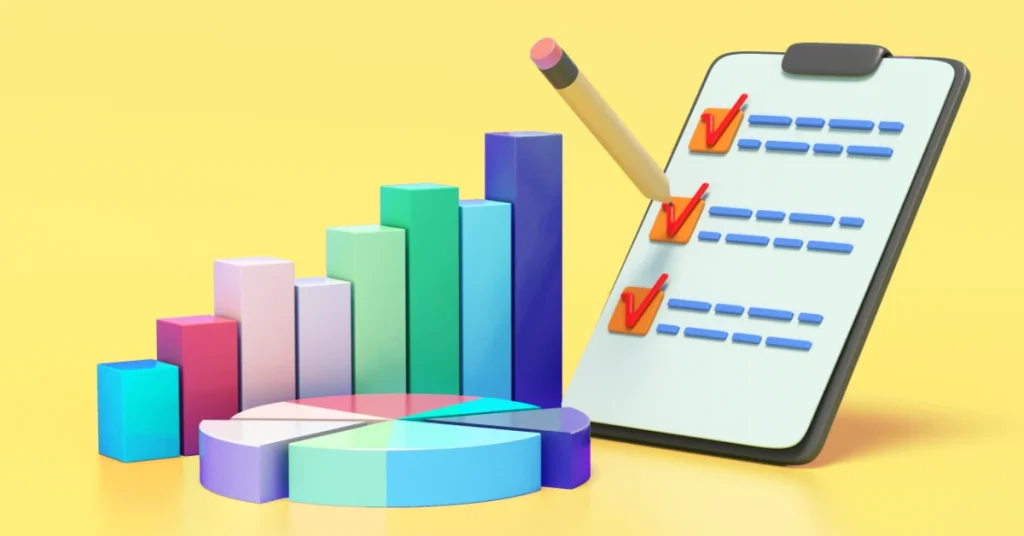As educators leave for work each morning, they have to give themselves enough time to arrive before school starts. As my colleagues and I would bemoan (usually when contemplating if there was enough time to stop for coffee), “I have [insert number] kids that rely on me to be at school on time. I don’t have the luxury of being late.” This is why, whenever I got into my car to leave each morning, I would check my GPS app for traffic congestion and the fastest route to school. In short, I used data to decide how to proceed.
You’ll have to excuse the unfortunate connection of that example to data-”driven” decision-making, but in recent years, using data to make instructional decisions has become a priority in K-12 classrooms everywhere. This is because, in a post-pandemic education, it’s become even more important to have accurate information to drive teaching decisions and strategies. Student data allows teachers and administrators to make decisions that are backed by evidence, ensuring students receive the best education possible. With the right data-driven instruction (DDI), teachers can determine the most efficient way to get students from point A to point B.1
What is Data-Driven Instruction and Accountability in Education?
Data-driven instruction is all about using data to inform how educators teach. It involves gathering data on student performance and using it to figure out what teaching methods and materials are most effective. With DDI, AP® teachers can make sure that they’re tailoring their instruction to what’s best for each student, helping them reach their full potential.
This also adds a certain level of accountability in the classroom. Not only can teachers tell how a student is performing and, in response, adjust their instruction–high school administrators can also tell how effective their AP program is, and support teachers with adjusting their instructional strategies.

Data-Driven Instruction Today
In the 21st century, technology has made data easier to collect, store, and analyze. Schools and districts now have access to a vast array of data points that can be used to inform instructional decisions. Data-driven instruction has become an essential part of the education experience, with teachers and administrators using it to inform decisions about curriculum, instruction, and assessment.
In addition, data-driven instruction has become an important part of the educational landscape. With the rise of digital learning and the use of online learning platforms, educators are now using student data to improve teaching and learning more than ever. This student data can be used to track progress and tailor instruction to meet the needs of individual learners.
Traditionally, AP teachers and administrators have a hard time collecting data that is consistent across a grade level or subject area, and can therefore inform their instruction moving forward. This is, in part, because a lot of AP teachers make up their own assessments or don’t have a consistent way of monitoring student performance. True, data-driven instruction is an ongoing process, but its impact on the educational landscape has been profound nonetheless. DDI is an important part of modern education, and it is likely to become even more important as technology continues to evolve.

What Gets in the Way of Data-Driven Instruction?
Data-driven instruction can be a great way to tailor instruction to the needs of individual students, but it’s important to be aware of some potential pitfalls.
By the Time Student Data is Available, It’s Usually Outdated

Teachers are often left in the dark when it comes to data-driven instruction. Without access to current data, it can be difficult to make informed decisions about the best ways to teach their students.2 To make matters worse, outdated student data can lead to misguided instruction, resulting in lower student achievement. Fortunately, technology and digital tools are making it easier for teachers to access up-to-date data and make informed decisions about their teaching practices. By taking advantage of these digital resources, teachers can ensure that their instruction is rooted in the most current student data, leading to better learning outcomes.
Time is a Limited Resource Teachers Don’t Have
Data-driven instruction is a valuable teaching methodology, but unfortunately, it sometimes takes a backseat to other priorities in the classroom. Without sufficient time, teachers don’t have the opportunity to prepare and execute lessons that are based on data. This can be a real detriment to student learning and growth. What’s worse is that teachers are often expected to fit data-driven instruction into their already full lesson plans, further reducing the amount of time they have to focus on it.
To use data-driven instruction effectively, teachers must be given the time and resources they need to properly implement it. With time and resources, teachers can use data to inform their lesson plans, track student progress, and make necessary adjustments to their instruction to ensure that students are learning and growing.
There is a Lack of Trust Between Administrators and Teachers
Increased pressures on teachers and administrators, like the No Child Left Behind Act of the early 2000s, have placed a heavy emphasis on standardized testing.3 This can put extra pressure on teachers to produce higher test scores, and often results in a “teaching to the test” mentality, where teachers focus more on test preparation than actual learning.
It’s no secret that teachers and administrators are facing a trust deficit when it comes to accountability for student performance. With the current accountability system in place, teachers and administrators are feeling the pressure to show results, but without having the trust of their students, parents, and community, meeting those expectations can be difficult. This lack of trust can lead to a disconnect between teachers and their students, creating an atmosphere of distrust and frustration. This can make it harder for teachers to do their jobs and for administrators to ensure that students are getting the best education possible.

A Realistic Way to Implement Data-Driven Instruction
Data-driven instruction is an effective way to ensure that students are getting the best education possible. But it can be intimidating to teachers who are unfamiliar with the process. Fortunately, there are realistic approaches that educators can take to make data-driven instruction less overwhelming.
Build Trust and Relieve Unnecessary Pressure
Data-driven instruction is an important tool for administrators and teachers to use in the classroom. However, it’s important that administrators trust and empower teachers to use data-driven instruction in their own unique way. Administrators can and should provide teachers with the resources they need to be successful, and then trust them to use DDI in a way that works best for their students. This could include allowing teachers to plan their own lessons or to use interactive activities to engage students. By giving teachers freedom and trust, administrators can ensure that data-driven instruction is implemented in an effective and meaningful way.

Support Teachers With Opportunities to Develop Their Data Analysis Skills
To prepare educators to use data-driven instruction in their classrooms, schools and districts must provide them with the right skills. This starts with providing teachers with professional development opportunities to learn how to interpret and use data to inform their instruction. This could include workshops, seminars, and online courses covering topics such as data literacy, data analysis, and data visualization.
Once teachers have the skills they need to interpret and use data, they can begin to develop data-driven lesson plans. This means looking at data to determine which areas students are struggling with and then designing instruction that meets those needs.
Finally, schools and districts should provide teachers with the resources and support they need to be successful. This could include access to technology, data systems and software, as well as mentorship and feedback from school administrators.
Choose a Data Platform with Accessible Data in Real-Time
Finding the right data platform for DDI is essential. With the right data platform, teachers and administrators can easily access and analyze student data, which can help them make informed decisions about how to best support students.
When choosing a data platform for AP courses, educators might consider the following:
1. Cost: Make sure a platform is within their school’s budget. Many data platforms offer subscription plans with different levels of features and services.
2. Ease of Use: The platform should be easy to use and understand. Teachers and students don’t want to spend hours trying to figure out how to use the platform—it should be intuitive and user-friendly.

3. Data Security: The chosen platform should be secure and compliant with applicable laws and regulations.
4. Customization: Some data platforms allow people to customize the way data is presented and analyzed, which can be very helpful in understanding the data and making informed decisions.
5. Support: A learning platform should have a good support system in place. This way, educators can get help quickly if they run into any issues.
Here at UWorld, our Learning Tools for AP Courses provide extensive data reports on a student, class, school, or even district level. This makes UWorld data reports consistent from classroom to classroom and effective for driving instruction, something that differentiates our learning tools from those offered by competitors.
By taking the time to consider these factors, administrators and teachers can find the best data platform for their AP courses, allowing them to effectively put a data-driven instruction plan into action.
DDI and Instructional Accountability
Data-driven instruction is an approach to education that relies on analyzing data to inform decisions about teaching and learning. This approach allows teachers to tailor instruction to meet the needs of individual students and assess their progress more accurately. Teacher accountability involves using the data to evaluate teacher performance and ensure that teachers are meeting the needs of their students. By applying DDI to teacher accountability, teachers can make sure that they are providing effective instruction and that their students are making progress in their learning.
Data-driven instruction allows teachers to track student progress over time, see which areas need more focus, and determine the best way to support each student. It also allows administrators to view teacher performance and ensure that students are receiving the best possible education. While data-driven instruction may be a challenge to implement, it has the potential to improve the quality of teaching and learning for everyone involved.
Students Should be Held Accountable, Too
It’s important for students to take responsibility for their own learning. They should be held accountable for their own progress and for putting in the effort it takes to get the most out of their education. It’s also important that students have the ability to track their own performance and progress–when they are able to see their own growth, it can greatly impact their motivation to do their best.
While tracking their own performance metrics, students should set goals according to their personal data and work collaboratively with their teachers to master new concepts. Finally, students should actively engage in the learning process by doing their own research and practice, and by reflecting on their strengths and weaknesses.
Teachers cannot force students to listen to them or complete their assignments. They can only provide guidance, advice, and the resources to help students understand the material and complete their work.

How UWorld Learning Tools for AP can Provide a Means for Effective Data-Driven Instruction
There’s no question–with the rise of digital learning and the use of online learning platforms, educators have access to a wealth of data that can be used to inform instructional decisions. UWorld’s Learning Tools for AP Courses offer accurate data reporting on student, class, school, and even district levels.
At UWorld, our exam-like practice questions and assessments provide educators with quality data that can be used for instructional accountability, tracking student progress, and tailoring instruction for individual learners. Our Learning Tools for AP Courses don’t just make data-driven instruction possible–they make it simple.

References
- The Learning Accelerator. (2023). Differentiation: How do I use data to adjust instruction for groups… Resources & Guidance from The Learning Accelerator. https://practices.learningaccelerator.org/problem-of-practice/data-differentiation-how-do-i-use-data-to-inform-instruction-for-groups-and-individual-students#:~:text=In%20order%20to%20differentiate%20instruction,unique%20needs%20of%20each%20student
- Data-driven decision making in education: 11 tips: American University. School of Education Online. (2019, December 11). https://soeonline.american.edu/blog/data-driven-decision-making-in-education/
- Klein, A. (2015, April 10). No child left behind: An overview. Education Week. https://www.edweek.org/policy-politics/no-child-left-behind-an-overview/2015/04
- Jurgens, T. (2023, July 3). School accountability reporting with Better Data. Schoolytics. https://www.schoolytics.com/blog/2022/08/school-accountability-reporting-with-better-data
- The Ultimate Guide to data-driven instruction. Otus. (2023, June 28). https://otus.com/guides/data-driven-instruction/
- Colorado Department of Education. (n.d.). Data Driven Instruction strategy guide. CDE. https://www.cde.state.co.us/uip/strategyguide-datadriven#:~:text=Data%2DDriven%20Instruction%20encapsulates%20a,daily%2C%20weekly%2C%20etc).
- Dyck, B. (n.d.). Driven By Data: Teaching in the Age of Accountability. Education World. https://www.educationworld.com/a_curr/curr414.shtml
- Jerrim, J., & Sims, S. (2021, April 12). School accountability and teacher stress: International evidence from the OECD talis study – educational assessment, evaluation and accountability. SpringerLink. https://link.springer.com/article/10.1007/s11092-021-09360-0
- Greene, P. (2022, March 7). America’s School Accountability System is broken. here are the issues that must be addressed to fix it. Forbes. https://www.forbes.com/sites/petergreene/2022/03/05/americas-school-accountability-system-is-broken-here-are-the-issues-that-must-be-addressed-to-fix-it/?sh=6e2da6d77f96




